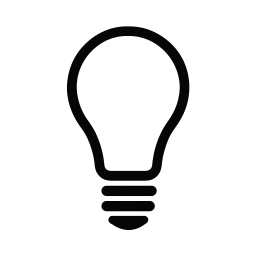Content marketing without seasonal planning is like surfing without checking the wave forecast—you might catch something, but you’re probably going to wipe out. After running content strategies for tech companies for the past five years, I’ve learned that timing isn’t just important; it’s everything.
The secret weapon that changed my entire approach? Google Trends’ historical data and seasonal pattern recognition. This isn’t just about knowing when “Christmas shopping” peaks—it’s about understanding the subtle rhythms that drive your audience’s behavior throughout the year.
Why Most Content Teams Get Seasonal Planning Wrong
Here’s the brutal truth: most content teams are reactive, not predictive. They see a trend happening and scramble to create content, but by then, they’ve already missed the wave. The smart teams—the ones driving real results—are publishing content before their audience even knows they need it.
Google’s own documentation puts it perfectly: “try to find seasonal trends in the data. With that information, you can plan ahead to have high quality content available on your site a little before people are searching for it, so that when they do, your content is ready for them.”
That “little before” part is crucial. It’s the difference between riding the wave and getting crushed by it.
The Google Trends Advantage: 20+ Years of Search History
What makes Google Trends particularly powerful for seasonal planning is its historical depth. We’re talking about over 20 years of search trend history—data that goes back to 2004. This isn’t just useful for identifying patterns; it’s essential for understanding long-term behavioral shifts and predicting future trends.
Think about it: you can see how search behavior evolved during the 2008 financial crisis, the pandemic, the rise of social media, and every major cultural shift in between. This historical context helps you understand not just what people search for, but why their behavior changes.
The Four Types of Seasonal Content Opportunities
Through analyzing hundreds of keyword patterns, I’ve identified four distinct types of seasonal content opportunities that most creators miss:
1. The Clockwork Trends
Some trends show up “like clockwork every year,” as SearchAtlas notes, and planning content around them gives you “a big advantage.” These are your obvious seasonal plays: tax software in January, vacation planning in February, graduation gifts in May.
But here’s the twist—the timing often shifts earlier each year. Christmas shopping queries now start in September instead of October. Back-to-school content needs to be live by June, not July. Use Google Trends to track these shifts year over year.
2. The Hidden Seasonality
This is where Google Trends really shines. Searches for “productivity apps” consistently peak in the third week of January—not the first week like you’d expect. “Career change” queries surge in September, not January. “Home organization” spikes in March, aligning with spring cleaning but lasting through April.

These patterns aren’t obvious, but they’re incredibly consistent. Once you identify them, you can plan content that hits exactly when your audience is most receptive.
3. The Emerging Cycles
New technologies and cultural shifts create entirely new seasonal patterns. “AI productivity tools” now shows clear seasonality that didn’t exist three years ago. “Remote work software” has developed its own rhythm tied to return-to-office announcements and quarterly planning cycles.
The key is identifying these emerging patterns early. Look for consistent monthly variations in newer search terms over at least two years of data.
4. The Event-Driven Spikes
These are the solar eclipse moments—predictable events that create massive, temporary search spikes. The April 8, 2024 total solar eclipse that Backlinko references is a perfect example. It was “the first in the continental U.S. in 7 years,” creating a massive content opportunity for anyone who planned ahead.
The smart play? Create evergreen content around predictable events 6-12 months in advance, then amplify it when the spike hits.
My Step-by-Step Seasonal Content Planning Process
Here’s the exact process I use to build seasonal content strategies for tech companies:
Step 1: Historical Pattern Analysis
Start with your core keywords in Google Trends. Set the time range to “2004-present” (or as far back as your industry has data). Look for:
- Consistent yearly peaks and valleys
- Gradual shifts in timing over the years
- New patterns that have emerged in recent years
Export the data to a spreadsheet and create a master calendar of peak search periods.
Step 2: Competitive Timing Analysis
Check when your competitors publish seasonal content. Are they early, late, or right on time? Use Google Trends to see if their timing aligns with actual search behavior. You’ll often find massive opportunities where everyone publishes content at the wrong time.
Step 3: Content Gap Identification
This is where it gets interesting. Look for high-volume seasonal searches that don’t have great content targeting them. Use the “Related Queries” and “Related Topics” sections in Google Trends to find semantic variations and long-tail opportunities.
Step 4: Production Timeline Creation
Here’s the crucial part: work backward from optimal publish dates. If searches peak in March, when do you need to start seeing traffic growth? Probably February. When do you need to publish? January. When do you need to start production? November.
Google Trends shows you the search curve—map your content production timeline to ensure you’re ready for the upswing, not the peak.
Advanced Seasonal Strategies That Work
Geographic Seasonality Arbitrage
Different regions have different seasonal patterns. Use Google Trends’ geographic filtering to identify opportunities where seasonal trends hit different markets at different times. Content about “winter productivity tips” might work in Australia during their winter (June-August) and then again in the Northern Hemisphere.
Platform-Specific Seasonality
YouTube seasonal patterns often differ from web search patterns. Use Google Trends’ YouTube filter to identify video content opportunities that don’t align with traditional web search seasonality. Video content around “year-end reviews” peaks in December for YouTube but November for web search.
Micro-Seasonality
Look beyond monthly patterns to weekly and even daily trends. “Monday motivation” content peaks on Sunday evenings and Monday mornings. “Weekend project” searches spike on Friday afternoons. These micro-patterns can inform your publishing schedule and social media strategy.
Tools and Workflows That Scale
The Google Trends Alert System
Set up Google Alerts for your core seasonal terms to get notified when search volumes start their upward trajectory. This gives you a few weeks’ head start to amplify content or create timely additions.
The Historical Calendar
Create a master calendar that combines Google Trends data with your industry’s key events, product launches, and cultural moments. This becomes your strategic foundation for the entire year.
The Content Recycling Framework
Seasonal content isn’t one-and-done. Use Google Trends to identify when to refresh, republish, and repromote your seasonal pieces. Content that performed well in March 2023 might need updates for March 2024, but the core strategy remains valuable.
Measuring Success Beyond Traffic
Traditional content metrics don’t capture the full value of seasonal planning. Track:
- Time-to-traffic: How quickly does your content start gaining traction after publishing?
- Peak capture rate: What percentage of peak search volume do you capture?
- Seasonal share: How does your search visibility change during peak periods?
- Content longevity: How long does seasonal content continue driving traffic?
The Competitive Advantage
Here’s what most content teams miss: seasonal planning isn’t just about creating better content—it’s about resource allocation. When you know exactly when your audience will be most engaged, you can concentrate your best creative talent, biggest promotion budgets, and most strategic partnerships around those moments.
Companies that nail seasonal content planning don’t just see traffic spikes—they see compound growth. Each seasonal cycle builds on the last, creating authority and audience that competitors can’t match.
The data is already there, waiting for you to act on it. Google Trends gives you the roadmap; the question is whether you’re willing to plan far enough ahead to use it effectively.







Leave a Reply